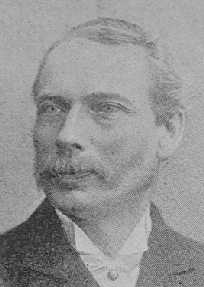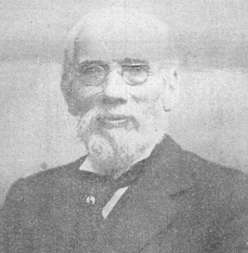Friends of Hastings Cemetery



1895
1928
Obituary cont.
At first he was intended for an educational career, and for a year studied with that end in view, but finally choosing the printing and stationery trade, he was apprenticed for seven years to his cousin, a Mr Thomas Brightly, who conducted the combined business of printer, stationer and bookseller. On the completion of his apprenticeship Mr Cousins obtained a position with the firm of John Haddon and Co., wholesale printers and publishers, Bouverie Street.
On leaving Saxmundham in 1865, he received a testimonial in the shape
of a gold watch and a medal, bearing the inscription: "Presented to Harry Cousins by the Harmonic Society and inhabitants of Saxmundham, as a mark of respect."
In a description of his early days, found among his papers, Mr Cousins wrote: "This medal I still wear on my watch chain, and I am proud to believe that during a long life I have endeavoured to deserve the respect embodied in the gift." His connection with the Harmonic Society is explained by the fact that he possessed a good tenor voice, trained in the church choir.
After about nine months in London, Mr Cousins was invited by his former employer to return to Saxmundham as manager of the business, which offer he accepted, but he had by that time seen too much of the world to be content to vegetate in Suffolk. In 1866 he returned to London, and in the same year entered into partnership with the late Mr F J Parsons, printer and proprietor of the 'Hastings and St Leonards Observer".
On severing his connection with the 'Observer' Mr Cousins became a valuer and auctioneer to the printing and allied trades. There followed the development of general business as an auctioneer, one of his most treasured possessions being a framed poster announcing his first sale of house property, in 1878. The house in question was 27 St Andrew's Road, now part of Queen's Road. Mr Debenham became his partner about 20 years ago.
It would take many columns of the 'Observer' to describe fully the many public activities into which Mr Cousins entered about this time. He was an enthusiastic member of the Hastings and St Leonards and the Rye Athletic Clubs, being himself no mean athlete. In 1877 we find him promoting a great cricket match, in which a local team met a team of 'stars', including W G Grace. He was one of the original members of the East Sussex Blackbirds, a troupe of 'nigger' minstrels, whose performances for charity will recall many a tuneful memory to the older generation.
These were but recreations; it was as a pioneer of 'Brighter Hastings' that Mr Cousins made his mark on the history of the town. From 1889 onwards his name recurs again and again in contemporary records as an advocate of a 'forward' policy designed to attract visitors and make Hastings the Queen of seaside resorts. In that year the Borough Association was founded, and he was one of the members of the Committee, having been an official of the Publicity Association, of which the new body was a revival.
His first great achievement was the organisation as Secretary of the
FIRST HASTINGS CARNIVAL
in 1895. After much discussion, the support of the Corporation was obtained, and the carnival, which occupied four days in August of that year, was an immense success, financially and in every other respect. It was repeated in the following year, when success again rewarded its promoters, despite fickle weather and a riot caused by a crowd breaking down barriers placed across Eversfield Place and the parade, and so obstructing a right of way.
In 1897, Mr Cousins wroe to the 'Observer', suggesting that the duties of Councillors "should be directed beyond the question of roads, parks, sanitation, lighting and such matters, and that a department of committee should be formed, whose efforts shall be specially directed to the conception and carrying out of plans which have for their object, firstly, the attraction of visitors, and secondly, the provision for their comfort and amusement". He has lived to see his wisdom proved and his policy adopted.
In 1905, Mr Cousins joined the committee of the Amusements Association, a body with functions analogous to those of the recently defunct Fetes Committee.
The next important movement with which he was associated was the formation in 1909 of the Progressive League, which lifted Hastings out of the rut into which it had fallen and enabled it to regain the place as a pleasure resort which it had lost through the unimaginative policy of its civic leaders. Together with Messrs A Newnham, A H Philpot, J Parsons, Alfred Dyer, H Metcalf, E W Amoore, E A Hocking, Geo. Cox, and others, Mr Cousins founded the League, and acted as its temporary Secretary. Its achievements, including the White Rock Gardens and Pavilion and the Pier Extension, are a matter of common knowledge, and the spirit which animated it pervades the municipal life of the town today.
No account of Mr Cousins' public life would be complete without reference to his connection with the Hastings Fire Brigade. For many years he was Lieutenant and Secretary, working in co-
His activities included the Secretaryship of the Hastings Cottage Improvement Society. He was a member of the Hastings Museum Committee and of the Sussex Archaeological Society. For 25 years he was Secretary to the Christ Church, Blacklands, Church Council, and during his tenure of office funds were raised for building the present church tower.
It is as an antiquarian that Mr Cousins was best known to the people of Hastings in recent years. His interest in the antiquities of the district dates from his earliest connection with the town. His lectures on 'Old Hastings' and 'Hastings, Ancient and Modern' in conjunction with Mr C W Banks, who was responsible for the lantern slides, prepared the way for the publication, in 1912, of his book, 'Hastings in Bygone Days and the Present', which has become a
STANDARD WORK OF REFERENCE,
has gone through two editions, and is now out of print. [https://archive.org/details/hastingsofbygone00cous] This work was purely a hobby of Mr Cousins' and one to which he devoted many hours in its compilation. It was not produced with any idea of profit. He acquired a valuable collection of old prints particularly those with a local interest.
In 1868, at St Mary-
THE FUNERAL.
The funeral service at Christ Church, Blacklands, on Thursday, was attended by many well known local men, especially of the older, Mr Cousins' own generation. The Vicar (Revd James Morgan, D.D.) conducted the service, which included the hymns, "O God our help in ages past" and "Abide with me". Mr F W Maggs, at the organ, played "I know that my Redeemer liveth" and "O rest in the Lord".
The family mourners were Miss Phyllis and Mr Frank Debenham (granddaughter and grandson), Mr H E Debenham (son-
The obituary finishes with a long list of attendees at the funeral, and a longer list of those who sent floral tokens.